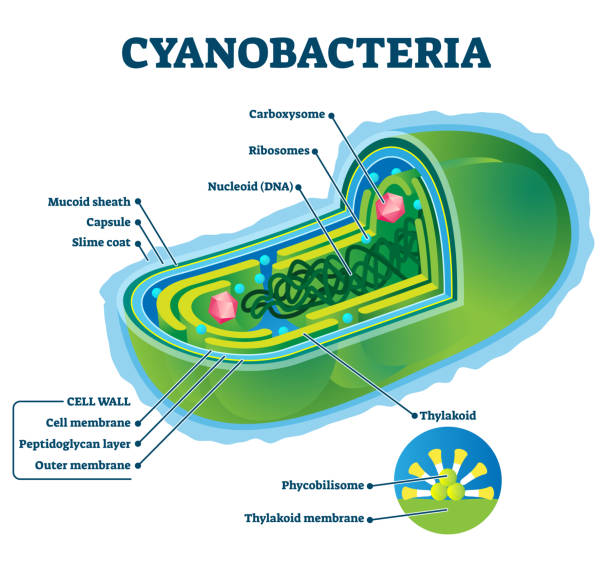MCQ On Cyanobacteria for NEET |MCQ On NEET Biology class 11th |MCQ Questions for class 11 Biology chapter 2 , with answer | Check the below NCERT MCQ question for class 11 Biology Chapter 2 based Cyanobacteria with answers.
MCQ Questions for class 11 Biology with Answers were prepared based on the latest pattern. We have provided class 11 Biology MCQ questions on Cyanobacteria with answers to help students understand the concept very well.

Cyanobacteria
MCQ on is useful for NEET/ CSIR/ UGC/ CBSE/ ICSE /AIIMS EXAM/ AFMC EXAM/ JAC exam/ STATE LEVEL MEDICAL Exam
Introduction:-
Cyanobacteria is a group of photosynthetic bacteria widely distributed in various aquatic habits (ocean, seas, rivers, lakes, etc.) and terrestrial habits (e.g. moist soils). They may live singly or in Colonies ( by forming filaments or Spheres with other Cyanobacteria).
Cyanobacteria are important oxygen producers of the planet. They are one of the oldest life forms on Earth together with the other early prokaryotes. They existed billions of years ago in the early extreme environments before plants and animals emerged.
MCQ ON Cyanobacteria for NEET
Here are 15 multiple-choice questions (MCQs) related to Cyanobacteria, along with their answers:
1. What is the primary photosynthetic pigment in Cyanobacteria?
A) Chlorophyll a
B) Chlorophyll b
C) Chlorophyll c
D) Chlorophyll d
Answer: A) Chlorophyll a
2. In which environments are Cyanobacteria commonly found?
A) Deep-sea hydrothermal vents
B) Polar ice caps
C) Freshwater and marine ecosystems
D) Desert sand dunes
Answer: C) Freshwater and marine ecosystems
3. Cyanobacteria are also known as “blue-green algae” because they:
A) Are actually a type of algae
B) Contain blue pigments
C) Can appear blue-green in color
D) Are found in blue-colored water bodiesbodie
Answer: C) Can appear blue-green in color
4. What is the specialized cell in Cyanobacteria responsible for nitrogen fixation?
A) Chloroplast
B) Heterocyst
C) Pseudopod
D) Vacuole
Answer: B) Heterocyst
5. Cyanobacteria played a crucial role in Earth’s history by contributing to the accumulation of which gas in the atmosphere?
A) Carbon dioxide
B) Methane
C) Oxygen
D) Nitrogen
Answer: C) Oxygen
6. Which metabolic process in Cyanobacteria involves converting atmospheric nitrogen gas into ammonia?
A) Photosynthesis
B) Nitrogen fixation
C) Fermentation
D) Glycolysis
Answer: B) Nitrogen fixation
7. Cyanobacteria can form symbiotic relationships with various organisms. In corals, they provide:
A) Protection from predators
B) Nutrients and photosynthates
C) Anchoring support
D) Shelter from harsh weather
Answer: B) Nutrients and photosynthates
8. Harmful algal blooms (HABs) caused by certain Cyanobacteria species can produce toxins harmful to aquatic life and humans. What is one of these toxins called?
A) Chlorotoxin
B) Saxitoxin
C) Cytotoxin
D) Neurotoxin
Answer: B) Saxitoxin
9. In addition to photosynthesis, Cyanobacteria can perform another metabolic process that generates energy. What is it?
A) Glycolysis
B) Fermentation
C) Oxidative phosphorylation
D) Anaerobic respiration
Answer: B) Fermentation
10. What is the filamentous structure that Cyanobacteria often form, aiding in soil stabilization and mat formation?
A) Stipe
B) Pseudopod
C) Trichome
D) Rhizoid
Answer: C) Trichome
Conclusion :-
MCQ On Cyanobacteria for NEET | What is the specialized cell in Cyanobacteria responsible for nitrogen fixation? A) Chloroplast , B) Heterocyst , C) Pseudopod , D) Vacuole , Answer: B) Heterocyst.







Leave a Comment